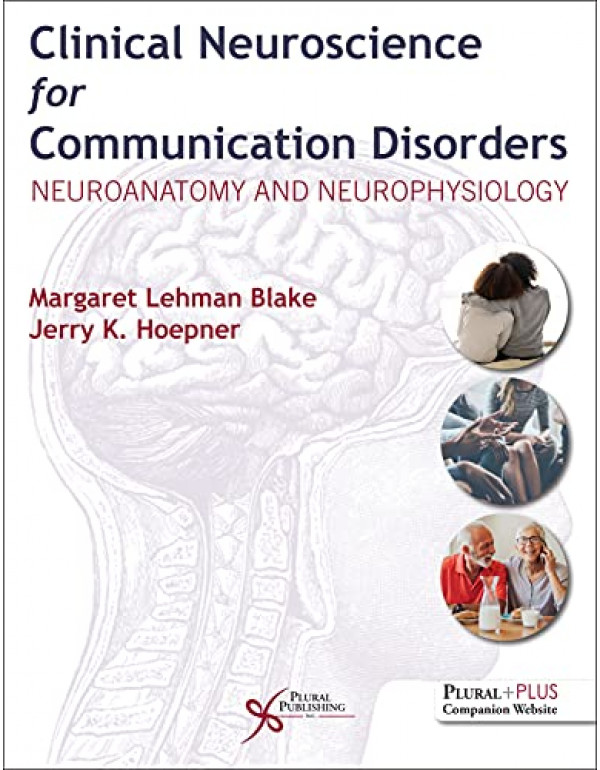- Type: Hardcover Book.
- Pages: 350
- Edition: 1
Clinical Neuroscience for Communication Disorders: Neuroanatomy and Neurophysiology, 1st Edition
Author: Margaret Lehman Blake, Ph.D.
Overview:
This book offers a comprehensive and accessible introduction to neuroscience for undergraduate and beginning graduate students in the field of communication disorders. It delves into the neurological underpinnings of communication systems like speech, language, cognition, hearing, and swallowing. The book starts with the foundation of the nervous system and progresses to the anatomy of the head and neck, then delves deeper into specific systems and functions.
Key Themes:
- Neurolinguistics: Exploring the brain's role in language processing and production.
- Neuroanatomy: Understanding the structure and organization of the nervous system relevant to communication.
- Neurophysiology: Examining the electrical and chemical processes underlying communication functions.
- Neuroplasticity: Highlighting the brain's ability to adapt and reorganize after injury or disease.
- Clinical Applications: Bridging the gap between neuroscience and clinical practice in communication disorders.
Features:
- User-friendly language: Complex neuroscience concepts are explained in a clear and concise manner.
- Abundant illustrations: High-quality diagrams and images enhance understanding of the nervous system.
- Clinical cases: Real-world scenarios showcase the practical application of neuroscientific knowledge.
- Emphasis on cranial nerves: Explicitly connects cranial nerves to oral-motor mechanisms and swallowing assessments.
- Integration with communication and cognition: Goes beyond basic anatomy to explore the complex interactions between neuroscience and communication functions.
Target Audience:
- Undergraduate and beginning graduate students in speech-language pathology and audiology.
- Speech-language pathologists and audiologists seeking to refresh their understanding of the neurological basis of communication disorders.
- Other professionals interested in the neuroscience of communication, such as educators and researchers.
Strength:
The book's strength lies in its clear presentation, engaging features, and strong connection to the field of communication disorders. It provides a firm foundation in neuroscience for students and professionals working with individuals experiencing communication difficulties.
Chapter Headlines: (Examples only, may vary in the actual book)
- Part I: Foundations of Neuroscience
- Chapter 1: Introduction to the Nervous System
- Chapter 2: Neurons and Neurotransmission
- Chapter 3: The Central Nervous System
- Chapter 4: The Peripheral Nervous System
- Part II: Communication Systems
- Chapter 5: The Auditory System
- Chapter 6: The Speech and Language System
- Chapter 7: The Swallowing System
- Part III: Applications in Communication Disorders
- Chapter 8: Neuroplasticity and Communication Rehabilitation
- Chapter 9: Clinical Considerations: Putting it all Together
Closing Paragraph:
"Clinical Neuroscience for Communication Disorders: Neuroanatomy and Neurophysiology" equips students and professionals with the necessary knowledge and understanding of the brain and its role in communication. By bridging the gap between neuroscience and clinical practice, this book empowers individuals to improve the lives of those experiencing communication challenges.
 4.8 (7) Reviews
4.8 (7) Reviews
